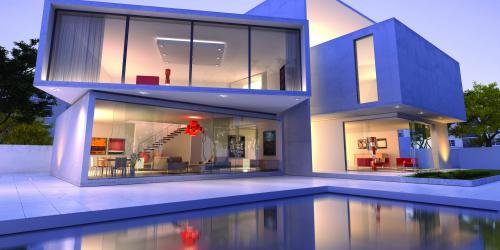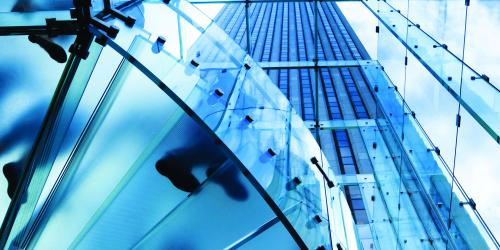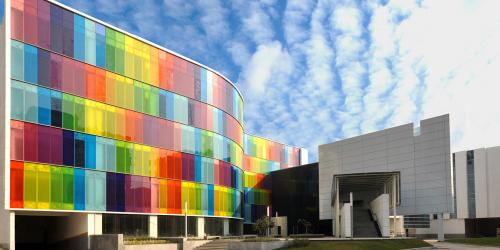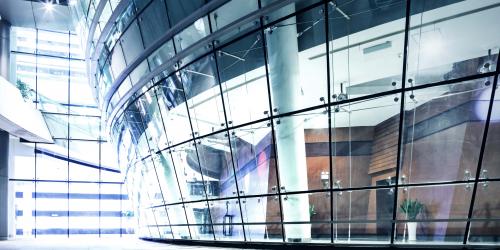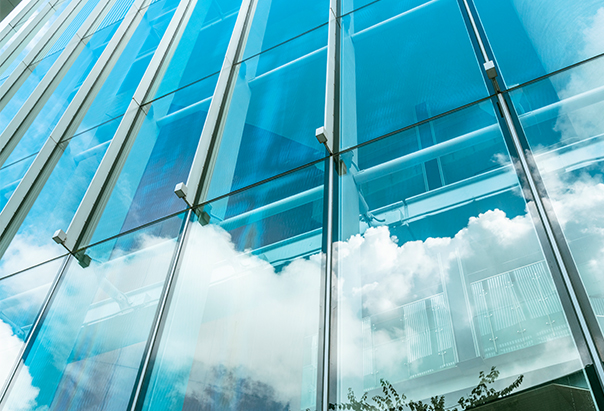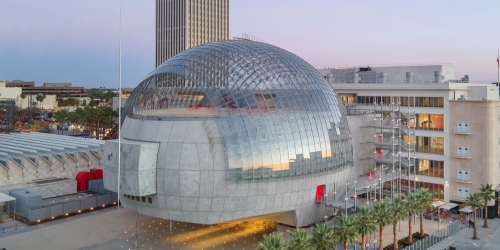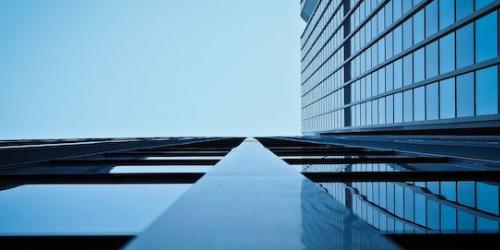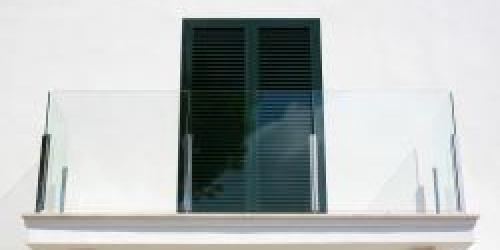New ways to use structural glass
For centuries, glass has been used to let light into structures. Now, using glass as a structural element is not only possible, it can be a design game-changer. With a major step forward in stronger glass, how do existing glass technologies work with this new structural concept? In this newsletter, we’ll explore new ways that you can integrate structural glass with design elements such as ceramic frit, exposed edges, and color. We’ll also look at how architects used these new ideas to bring an iconic building from the 1970s into a new era with an eye on form and function.
How Structural PVB works with glass types
Saflex® Structural PVB interlayer offers extraordinary strength and stiffness. It can be used to sustain a higher uniform load, or the glass thickness can be reduced while keeping the same load and area as conventional laminated glass Saflex Structural interlayer can be used with many different glass types and works well with annealed and heat-strengthened glass to reduce optical distortion. It can also be used with fully tempered glass to add to structural capacity.
Injecting color: Vanceva® Colors and Earth Tones
Color in architectural glass is a design trend that is here to stay. Saflex Structural interlayer is compatible with the Vanceva® Colors and Earth Tones interlayer systems, so architects have a full palette of color at their fingertips. Vanceva Colors and Earth Tones interlayer systems offer a vast amount of possibilities for both interior and exterior applications without having to increase glass thickness to achieve color intensity. When properly specified, Saflex Structural interlayer can enable the use of large surface glass and/or reduce the thickness of the glass needed to resist design loads. More details can be found in our previous newsletter.
Storm clouds brewing: Exposed edges meet mother nature
When exposed edges are a concern, Saflex Structural interlayer is formulated to provide strong resistance to delamination in open-edge exposed applications. It has good sealant compatibility performance. To demonstrate edge stability, Eastman went to Miami, Florida, where the heat and humidity are world renowned. Samples of the exposed edges of the glass were subjected to dew, fog, rain, heat, and high doses of intense sun. The following figure shows the difference in the edge stability number (anything below 500 is considered exceptional) between glass laminates using a conventional Saflex PVB (Saflex Clear) interlayer and Saflex Structural PVB interlayer, both exposed for the corresponding duration. Under the conditions of exposure, the Saflex Structural PVB interlayer performance for nearly five years is outstanding.
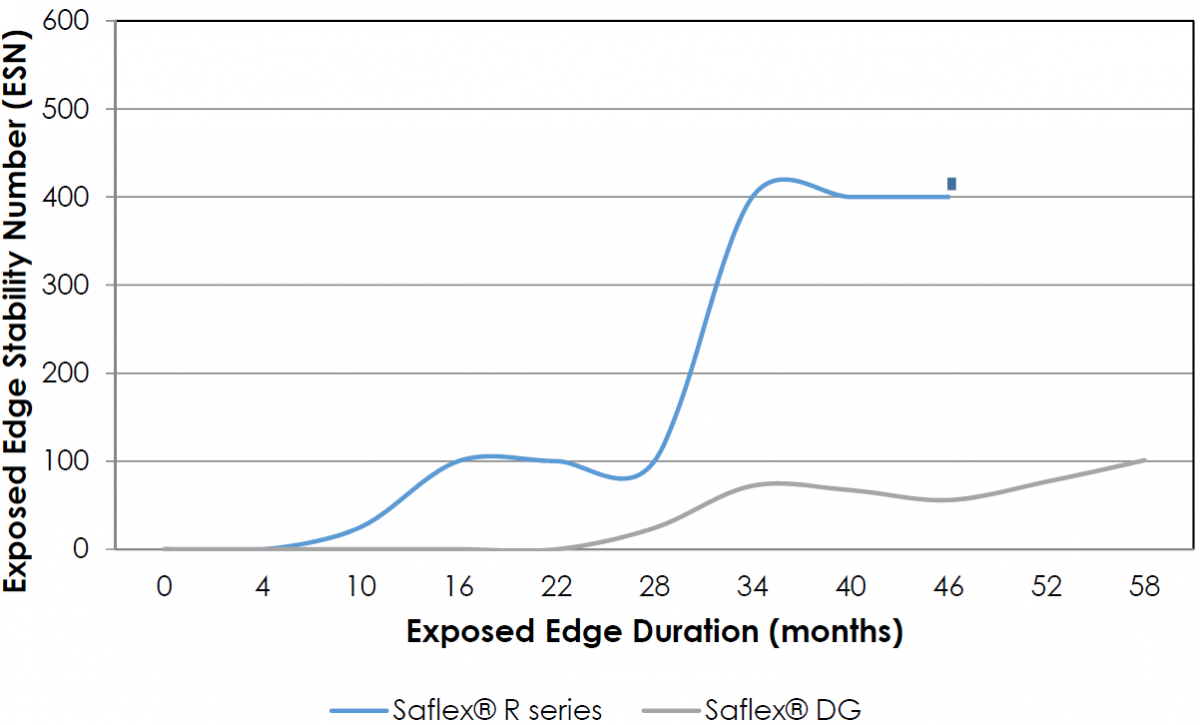
As the graph shows, traditional laminated PVB can stand the test of time, but Saflex Structural should be considered for exceptionally harsh conditions.
Don’t fret over frit
To understand how well ceramic frit performs with Saflex interlayers, just look out your car window. We’ve been adhering ceramic frit to Saflex PVB for more than 40 years.
Black ceramic frit bands have been extensively used in contact with Saflex PVB interlayers since press bent windshields became the norm. Glass surface temperatures of the black band of windshields can easily reach temperatures above 60°C or below –18°C. Saflex PVB interlayers have not shown degradation or delamination due to incompatibility in the fritted area when properly specified and installed.
How well do Saflex PVB interlayers adhere to glass? Recent lab tests show excellent results. Two frit scenarios were tested: solid coverage (100% of glass covered) and dot matrix coverage (between 40% and 50% of the surface (click here to learn more about test methods).
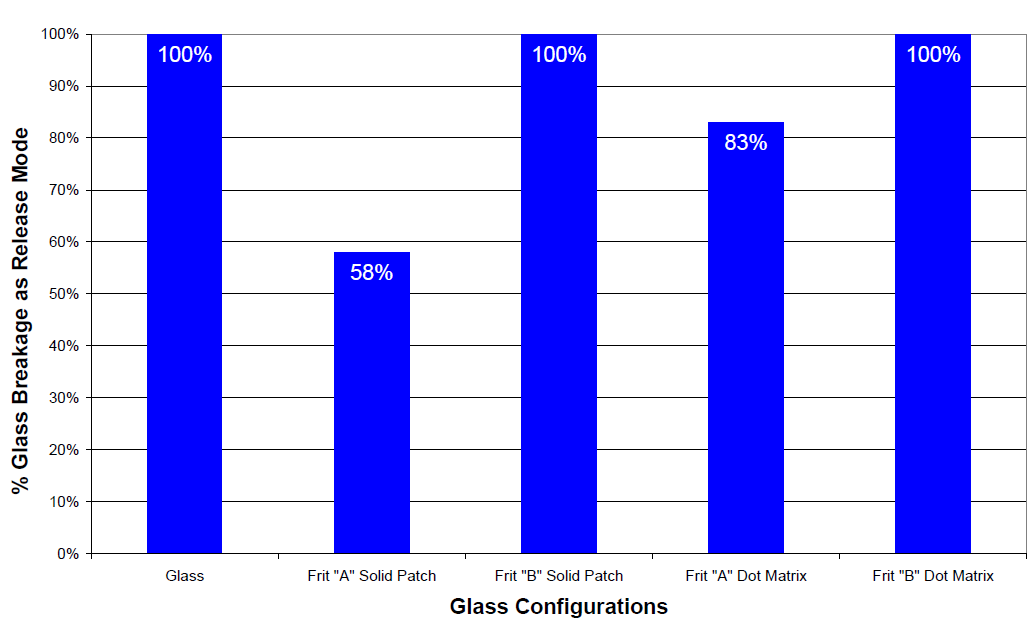
The ability of Saflex PVB interlayers to adhere to ceramic frit is demonstrated by these results. Although adhesion may be reduced compared to conventional glass, the Saflex PVB/frit interface is not the weak link when the system is loaded to its maximum.
The ideal vision of technology brings brightness, airiness, and simplicity to mind. And that’s exactly what has transpired at Amazon’s new company headquarters in Via Monte Grappa in Milan, Italy. The original complex—two eight-story buildings with connecting bridges on all floors—was built in the 1970s and considered an architectural icon among Milan’s commercial buildings.
For its renovation, Milan-based GBPA Architects refurbished the dark, heavy cladding with a glass façade using 10,000 sq m of Isolar Solarlux® solar control glass, anodized aluminum, and various Saflex PVB interlayers.
The interiors of both buildings were completely gutted and the connecting bridges removed to make room for a courtyard with a new grand entrance. In addition, roof terraces were added to each building. The project was designed to meet Platinum LEED certification.
GBPA Architects’ vision for Amazon Italy’s new headquarters blurs the lines between indoor and outdoor spaces. The solar control glass façade provides natural daylighting and also maintains a quiet, comfortable environment with the use of low-iron laminated glass, combining Saflex Acoustic interlayers with Saflex conventional PVB interlayers.
For the 1,100 integrated shading glass fins, Tvitec—one of Europe’s leading architectural glass manufacturers based in Spain—selected Saflex Structural PVB because of its increased edge stability, which is required in Milan’s aggressive urban climate, and compatibility with frit print. Saflex Structural PVB is typically compatible with inks and frits, reducing the risk of delamination. The glass fins have fastening holes and processed edges at 45 degrees. The silk screen printing on the fins provides decoration as well as shading.
Arup, project manager, supervised and coordinated the complete renovation from design phase and construction to test and commissioning on behalf of the client—real estate investment manager Antirion SGR. Part of their supervision included the prefabrication of the façade elements in the factory. For this particular job, 3,000 units of Isolar Solarlux super neutral with 10-mm thermally toughened coated glass were used.
With close attention to function, efficiency, longevity, and artistry, the newly redesigned and refurbished Amazon Italy headquarters in Milan will continue to be an iconic building, and conventional Saflex, Saflex Acoustic, and Saflex Structural interlayers that have been incorporated into the glazing of the building will help it function as intended for years to come.
View this project in the Saflex Gallery.





